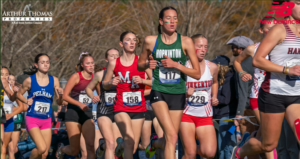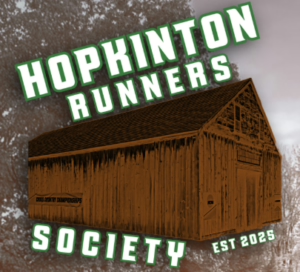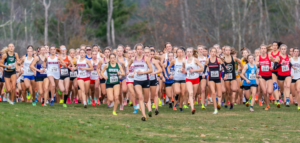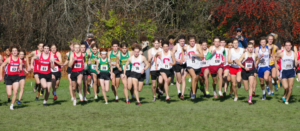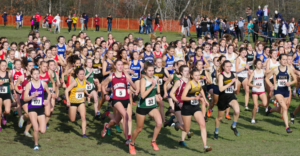If you’ve read my stuff you know I’m a Beau Miles fan. Since being introduced to him as a filmmaker, YouTuber to be more accurate, I’ve fallen into his determination to get more out of his surroundings, to find the adventure that is right in everyone’s backyard. His first backyard adventure committed to YouTube was “Run the Line” where he stitched together a run that followed a defunct rail spur that last saw its intended use 60 years prior. The run took him through some inevitable urban sprawl, but also looked a portions of the line that were reverting back to nature. The line ran by the place Beau grew up, wishing to flee for more grand adventure, and the place he currently calls home. Once an integral part of life in the region, now all but forgotten.

In the same amount of time that I’ve been familiar with Beau Miles and his unique manner of documenting his travels and finding adventure in what most of us overlook, my own running has morphed from training, to taking on challenges, to finding adventure. While I can’t say I was initially willing to agree with it, over time I’ve come to terms that training to race has passed. I also do not look at challenges the same either. Rather than looking to put myself all out there, pushing limits and measuring my capacity, now I’m simply looking to put myself there, finding adventure in the running I do. This is not to say I won’t take on challenges, I will. But the context of my running is now solely about the journey, something I was willing to look past a mere ten years ago.
So it’s a bit curious that it’s taken me this long to develop my own version of Run the Line. Over the years I’ve chronicled my two Mile an Hour experiences, with much less pizzazz as Beau did, but have taken to backyard adventuring in the same spirit as he has. I’ve done some small but adventurous runs in the White Mountains, along with exploring off the grid running routes in the various spots my real day job takes me. What I like to call, “micro-adventures”.

I’ve learned to slow things down (not that I seem to have a choice) and now squeeze the essence out of a run rather than try to maximize the training effect. Stop, or at least slow down, and smell the roses.
Which brings me to my next micro-adventure. In Beau’s Run the Line, he stitched the 43 kilometer segment from Warragul station passing through some bedroom communities, pastureland, and just some remote undeveloped Australian forest. So how is that I’ve not seen the 30 kilometer segment of the old Greenville line, from Greenville depot to the Squannacook rail parking in Groton as my opportunity to run the line?
The old Greenville line, completed in 1850, has been defunct since 1972, when severe washouts along the NH section and declining revenue led to its abandonment. The rail line had been built at some great expense to link the textile industry that was thriving in Greenville and New Ipswich to points south. The hilly 10 mile segment through Mason was where most of the expense came from, with the culminating challenge being the 611 foot span across the Souhegan River that was elevated over the river by 93 feet on cut granite columns. While the rail trestle is now gone, the granite pillars still claim its existence.

Since the rail line went defunct, most of the New Hampshire section has been removed and replaced with gravel and stone dust for recreational use. The first mile, the portion leaving downtown Greenville from the depot has not, with tracks still intact and visible until they lead off behind the Mustard factory and old plastics factory. Google maps shows a faint scar, connecting the depot with the granite columns before the old rail line crosses Route 31 and Adams Hill Road, where the rail trail begins.
Not only that, I grew up close to the line. Much like Beau had run a certain portion of the line for years before this project, I grew up running a portion of the line as well. Just down the road where I grew up, and learned about running by joining the cross country team in the 7th grade, I would seek out a portion of the rail line, since removed, to get out of the hot sun while I trained in the summers. There was a section that I could loop to make either 6 or 8 miles which included a bedrock cut through that would be ten to fifteen degrees cooler on those super hot days. The pace often dictated by avoiding the deer flies that seemed capable of following for the whole mile long plus section. I’ve run this stretch probably a couple hundred times so it’s surprising to me it’s taken four or so years for me to figure this project out.

A large portion of the rail line has been turned to rail trail, so not really too adventurous in that respect. However there are at least two more segments that have mostly gone back to nature. I’m anticipating 5 kilometers of the 30 to be unused for human locomotion in some time. In my research I’ve come across the steel rails in the woods, with saplings gaining the upper hand. And while urban sprawl hasn’t fully made the rail line unrecognizable, there are a number of backyards that haven’t seen rail travel in quite some time. There’s a chance they might not understand the adventure I have in mind.
But the die is now cast. I’ve penciled a date in the calendar, and as long as the weather holds, I’ve got a 30 kilometer micro-adventure on the books. I believe I’ve found an appropriate mate to join me, and we’ll look to run the line that last saw documented human travel 45 years ago. Hopefully our legs will move us along quick enough to stay out of buckshot and rock salt range.
Good on ya’ mate, We’ll see you out there.







